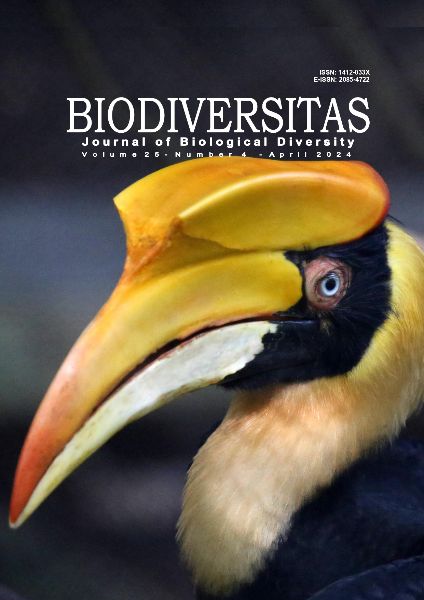Genetic diversity and connectivity of the Irrawaddy dolphin in Southern Thailand: Emphasizing the last fourteen of the Songkhla dolphin status from a microsatellite perspective
##plugins.themes.bootstrap3.article.main##
Abstract
Abstract. Budi T, Ninwat S, Sakornwimon W, Thongcham K, Phakphien R, Kalaya C, Phavaphutanon J. 2024. Genetic diversity and connectivity of the Irrawaddy dolphin in Southern Thailand: Emphasizing the last fourteen of the Songkhla dolphin status from a microsatellite perspective. Biodiversitas 25: 1729-1735. Irrawaddy dolphin (Orcaella brevirostris Gray, 1866) can be found in diverse aquatic environments, ranging from coastal to brackish water, stretching from the West of Bengal in India to the central part of the Indonesian archipelago. Despite its widespread distribution and flexible habitat tolerance, Irrawaddy dolphins in Songkhla Lake, Southern Thailand, are hypothesized to be isolated and exhibit concerningly low population numbers, threatening their long-term survival. Limited knowledge exists regarding their population genetics status. This study analyzed 30 samples from Songkhla Lake (SKL) and the Lower Gulf of Thailand (LGT) to assess their genetic diversity, structure, and connectivity using 16 microsatellite loci. Extremely low genetic diversity was observed in SKL (Ho = 0.039±0.039; AR = 1.122±0.489) and LGT (Ho = 0.033±0.033; AR = 1.141±0.566) populations. Population differentiation (FST = 0.033, p>0.05) and clustering analyses based on both Principal Coordinate Analysis (PCoA) and Discriminant Analysis of Principal Component (DAPC) suggest limited genetic divergence and potential panmixia (single genetic pool) between both populations. These findings highlight critical conservation concerns due to low diversity despite the lack of isolation, emphasizing the need for immediate and targeted efforts to ensure the long-term viability of this iconic yet vulnerable population.

